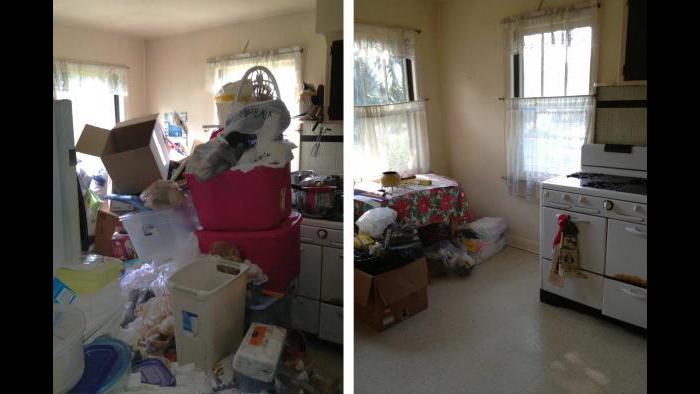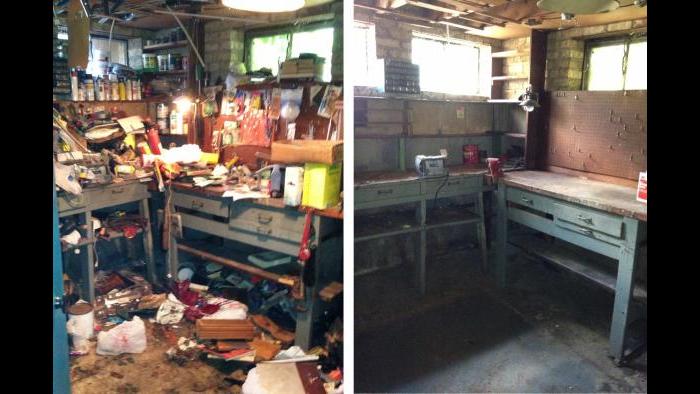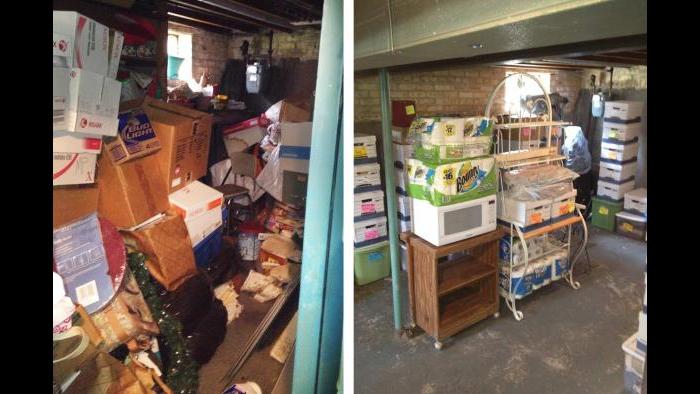Landlord Marty Max says for 18 years he never had a tenant who suffered from hoarding. Then, in the last three years, he discovered five.
“I saw clothes that were from the floor to the ceiling,” Max says about one tenant who began having noticeable problems four or five months into his lease. “I saw tree stumps, I saw rocks, I saw chairs and it was just overcrowded. The kitchen was a mess.”
Some city officials, landlords and service providers say they are seeing an uptick in reports of hoarding in the Chicago region. It’s become such a problem that two North Side aldermen have created a special task force—dubbed the Help for Hoarding Collaborative—to find solutions outside of the lengthy, and punitive, process of evicting tenants.
Landlords and city officials say hoarding presents a host of problems, such as bed bugs and other pest infestations, fire hazards, and dangerous conditions for the tenant suffering from hoarding, which can be a complex mental illness. Research has shown that hoarders are often older, poorer, and live alone, which makes it challenging to identify the number of people grappling with hoarding.
Some city officials and mental health experts attribute the rise in reports of hoarding to greater public awareness thanks to reality television shows like Lifetime’s “Hoarders.”
But Max says he believes Mayor Rahm Emanuel’s decision to close six of the city’s 12 mental health clinics in 2012 hasn’t helped.
In 2010, the city’s non-emergency 311 call center received 18 calls about hoarding, according to city data. In 2011, that number more than doubled to 37 calls and then 44 calls in 2012. The 311 center refused to release data on all calls about hoarding and withheld reports that also involved elder abuse, citing state privacy laws.
Map: Hoarding incidents reported to 311 from January 2010 through August 2015 that were released to "Chicago Tonight." Click on an area to see the number of incidents.
Ald. Joe Moore (49th Ward) says he doesn’t believe there is a relationship between the increased reports of hoarding and the closing of the mental health clinics.
“I think that this is just a condition that people are more aware of now,” he says. “That it’s more than an eccentric person who can’t part with their belongings. That this is a compulsive condition and that people engaged in it are doing that because there are other things going on in their lives.”
Moore and Ald. Harry Osterman (48th Ward) have created the Help for Hoarding Collaborative task force that includes mental health experts, city officials and other stakeholders who are working on a comprehensive, long-term plan that offers solutions other than evicting a hoarder.
“We want to do more than just throw these people out on the street,” Moore says. “They need help. They need assistance. Many of them don’t have family connections. They don’t have a support network. And so it falls on government agencies to become that support network.”
But the task force may have its work cut out for itself. Not only is hoarding challenging to diagnose—some hoarders don’t even think they have a problem—but treating this condition can be time-consuming, says Susan Doig, chief clinical officer for Trilogy Behavioral Healthcare in Chicago.
“There’s a deep sense of shame that goes along with hoarding disorders,” she says. “People often don’t want someone such as myself to come into an apartment because they are so ashamed of the state that the apartment is in. That’s one factor. And then actually trying to clean it out causes so much anxiety that it’s just so uncomfortable to think about changing how they live.”
Is hoarding happening more frequently in Chicago? Images above depict a hoarder's home before and after being cleaned up. (Photos courtesy of Patty Wolf)
Doig says one way the city and state could help hoarders is by covering costs associated with cleaning out an apartment or home, which isn’t typically covered in insurance plans. She says Trilogy once paid $3,000 to have a client’s apartment cleaned.
“The cost to really help someone to clean an apartment can be enormous and the folks that we serve don’t generally have the money to really effective clean their apartment and pay for junk removal,” Doig says.
Patty Wolf is the founder of personal organization company StuffBusters and is one of 25 master trainers who have been certified with the Institute of Challenging Disorganization, a school and research center dedicated to organization. She says that depending on the severity of the problem, cleaning out an apartment or home can cost anywhere from $3,000 to $20,000.
She says she has worked with a number of clients suffering from hoarding and tries to be as compassionate as possible because she understands how stressful cleaning can be for them.
“These are situations that are beyond people’s control,” Wolf says.
“They don’t as young children think, ‘I can’t wait to grow up and be in a hoarding situation.’”
Wolf says she had one client who didn’t appear to be a hoarder at first. She says the main level of the client’s home appeared clean and organized, but when she went upstairs, she saw four bedrooms that were packed with unused, brand new art supplies.
“She considered herself to be an artist even but she didn’t create any art. She didn’t even try,” Wolf says. “So this was a situation where her identity was that she was an artist because she owned the supplies to be an artist. Her identity was what she had, not what she did.”
Wolf says it would be great if insurance companies would step up and cover cleaning services for hoarders. Otherwise, they’ll be evicted.
That’s a situation that Max tried to avoid with his tenant. Max says he tried helping the guy out by setting him up with a social service agency. Things got better for a while, Max says, but the clutter would always return.
“He had a reason for every single thing that was in his unit, like everything,” Max says. “He had boulders in his bathtub and I said what are you doing with these rocks and he said, well I use them as pumice stones for my feet. So, what are you doing with these tree branches, well I carve.”
Max says the he and the tenant voluntarily parted ways after two years.







